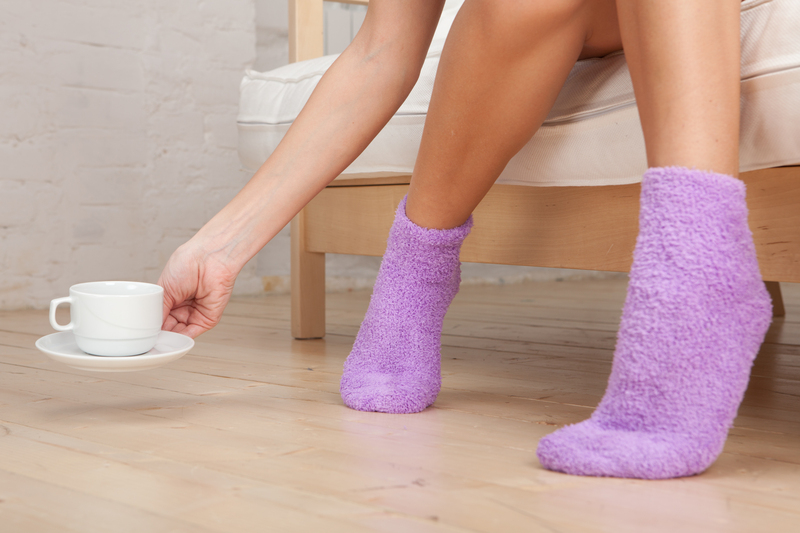Discover the Best Methods for Curtain Cleaning
Posted on 14/08/2025
Discover the Best Methods for Curtain Cleaning
When it comes to home maintenance, one area that often gets overlooked is curtain cleaning. The drapes and curtains that adorn our windows do far more than just enhance a room's ambiance--they act as filters, trapping dust, pollen, and pollution. Over time, this build-up not only detracts from your home's cleanliness but can also impact your health and indoor air quality. But with so many curtain cleaning methods available, how do you know which one works best for your specific situation?
In this comprehensive guide, you will discover the best methods for curtain cleaning, learn tips to maintain your drapes, and get actionable advice for both DIY enthusiasts and those seeking professional help. Armed with this knowledge, your curtains can remain fresh, beautiful, and allergen-free all year round!

Why Is Curtain Cleaning Important?
Before diving into the various methods for cleaning curtains, it's essential to understand why regular curtain care is so crucial. Curtains accumulate more than just dust; they collect pet dander, bacteria, and even mold spores in humid environments. Neglecting curtain hygiene can:
- Cause unpleasant odors to develop
- Contribute to respiratory ailments and allergies
- Shorten the lifespan of your drapery fabric
- Reduce the visual appeal of your living spaces
To prevent these issues, integrating a routine curtain cleaning schedule into your home maintenance plan is key. Not only will your home look cleaner, but you'll also actively promote a healthier living environment.
Understanding Your Curtain Fabric
Not all curtains are created equal. From delicate sheers to heavy velvets, each fabric type demands a specific approach. When considering the best method for curtain cleaning, always begin by checking the manufacturer's care label. Here are some general fabric guidelines:
- Cotton and linen curtains: Usually washable, but may require gentle cycles.
- Polyester and blends: Durable and easy to clean, often machine-washable.
- Silk, velvet, and embellished fabrics: Require more delicate care; typically best left to professional curtain cleaning services.
Tip: When in doubt, test your cleaning method on a small, inconspicuous area to ensure color fastness and to avoid shrinkage or damage.
Professional Curtain Cleaning: The Gold Standard?
If your curtains are made from delicate fabric, heavily soiled, or cover large windows, you may want to consider professional curtain cleaning services. These experts utilize industrial-grade equipment and specialized solutions to deliver a deep clean without compromising the fabric's integrity.
- Steam cleaning: Professionals often use steam to kill bacteria and refresh fabrics without soaking them. This method is ideal for heavy or thick drapes.
- Dry cleaning: Effective for curtains with tags that read "dry clean only" or for removing oil-based stains and odors.
- On-site cleaning: Some companies offer curtain cleaning without the need to remove them from the rod--saving you time and hassle.
While professional curtain cleaning may carry a higher cost, it's often the best option for maintaining your drapes' appearance and extending their lifespan.
DIY Curtain Cleaning Methods
For those who prefer a more hands-on approach, several DIY curtain cleaning methods can breathe new life into your drapes. Here's how to tackle cleaning at home, step by step:
1. Machine Washing
- Remove any hooks or metal hardware to prevent fabric damage.
- Shake off dust outdoors or give the curtains a gentle vacuum.
- Use a gentle, cold-water cycle and mild detergent.
- Hang dry or tumble on low heat, avoiding direct sunlight to prevent fading.
Note: Always follow care instructions, as some curtains may shrink or become misshapen in the washing machine.
2. Hand Washing Curtains
- Fill a tub or large basin with cold water and mild detergent.
- Submerge curtains, gently agitating by hand.
- Soak for 10-15 minutes, then rinse thoroughly with fresh water.
- Squeeze out excess water and hang to dry naturally.
Hand washing is particularly effective for delicate curtain fabrics like lace, silk, or those with intricate detailing.
3. Vacuuming Curtains
- Use a vacuum cleaner with a brush attachment.
- Work from top to bottom, lifting dust, pet hair, and allergens from the surface and folds.
- Perform this step regularly, ideally every two weeks, to prevent build-up.
This method is great for heavy curtains or when you're short on time but need a quick refresh.
4. Steaming Curtains
- Use a handheld garment steamer or your iron's steam setting.
- Hold the steamer 6-8 inches from fabric, moving vertically along the curtain.
- The steam will remove wrinkles and kill various microbes and dust mites.
Steaming is safe for most fabrics and can be performed while the curtains are still hanging.
5. Spot Cleaning
- Treat stains immediately using a mild stain remover or a mixture of water and gentle detergent.
- Dab instead of rubbing, to avoid fabric damage and spreading the stain.
Effective spot cleaning prolongs the time between full washes, keeping your curtains fresh and tidy.
Natural and Eco-friendly Curtain Cleaning Methods
Increasingly, homeowners are looking for green alternatives for household cleaning. To clean curtains naturally, you can use non-toxic solutions like:
- White vinegar: Mix equal parts vinegar and water for spot cleaning and deodorizing.
- Baking soda: Sprinkle on fabric, leave for 15 minutes, then vacuum away for odor absorption.
- Lemon juice: Effective for tackling odors or brightening whites without bleach.
Eco-friendly cleaning minimizes chemical exposure in your home and helps protect the environment.
Tips for Maintaining Clean Curtains
- Vacuum regularly: Incorporate curtain vacuuming into your weekly cleaning routine.
- Avoid excessive moisture: Humidity can attract mold and mildew; use a dehumidifier if necessary.
- Rotate and reposition: Switch curtain positions every few months to ensure even exposure to sunlight and wear.
- Open windows: Regularly air out rooms to prevent odors from settling into fabric.
- Follow seasonal cleaning: Deep clean at least twice a year, especially during allergy seasons.
Maintaining your curtains doesn't have to be a hassle--with consistent care, you can avoid stubborn stains and heavy build-up.
Common Mistakes to Avoid When Cleaning Curtains
- Ignoring care labels and fabric requirements
- Using harsh chemicals or bleach on delicate fabrics
- Over-wetting during cleaning, which can cause shrinkage or mildew
- Not testing stain removers on a small area first
- Using high-heat dryers, which may damage or fade fabrics
By steering clear of these common pitfalls, you can ensure a safe, effective curtain cleaning experience and preserve their beauty for many years to come.
When Should You Replace Your Curtains?
Even with the very best curtain cleaning methods, all curtains eventually show signs of aging. Consider replacing your drapery if you notice:
- Persistent mold or mildew stains that don't respond to cleaning
- Threadbare spots or fabric tearing
- Severe sun fading or discoloration
- Unpleasant odors that linger after washing
Fresh curtains not only elevate your home's interior design but also promote a healthier environment.

Frequently Asked Questions About Curtain Cleaning
How often should you clean your curtains?
Routine vacuuming should be done every 2 weeks, with full washes or professional curtain cleaning every 6 to 12 months, depending on exposure to dust, moisture, and odors.
Can you use a washing machine for all curtain types?
No, not all fabrics are machine-washable. Always check your curtain's care label. Sheer, cotton, or synthetic curtains are generally safe for machine washing, while silk, velvet, or heavily embellished curtains may require hand washing or dry cleaning.
Is dry cleaning safe for all curtains?
Dry cleaning is safe for many delicate or specialty curtains, but do review the manufacturer's label for specific care instructions. If in doubt, consult with a professional curtain cleaning service.
How do you prevent shrinkage during curtain cleaning?
To avoid shrinkage, always use cold water, gentle cycles, and avoid high-heat drying. Some natural fabrics, like cotton and linen, may shrink even with the best care, so air drying is recommended.
Can you clean curtains without taking them down?
Yes! Regular vacuuming, spot cleaning, and steaming can all be performed while the curtains remain in place, making it convenient to maintain cleanliness between major washes.
Conclusion: The Secret to Spotless, Long-lasting Curtains
The right curtain cleaning method depends on your fabric type, lifestyle, and personal preference. Whether you opt for professional curtain cleaning or embrace DIY solutions using eco-friendly ingredients, consistency is the key to keeping drapes beautiful and your indoor air fresh. Regular maintenance, gentle cleaning techniques, and awareness of common mistakes will safeguard your investment and the look of your home.
Don't let dirty curtains compromise your space! Discover the best methods for curtain cleaning today and transform your living environment with fresh, vibrant window coverings that shine all year round.




